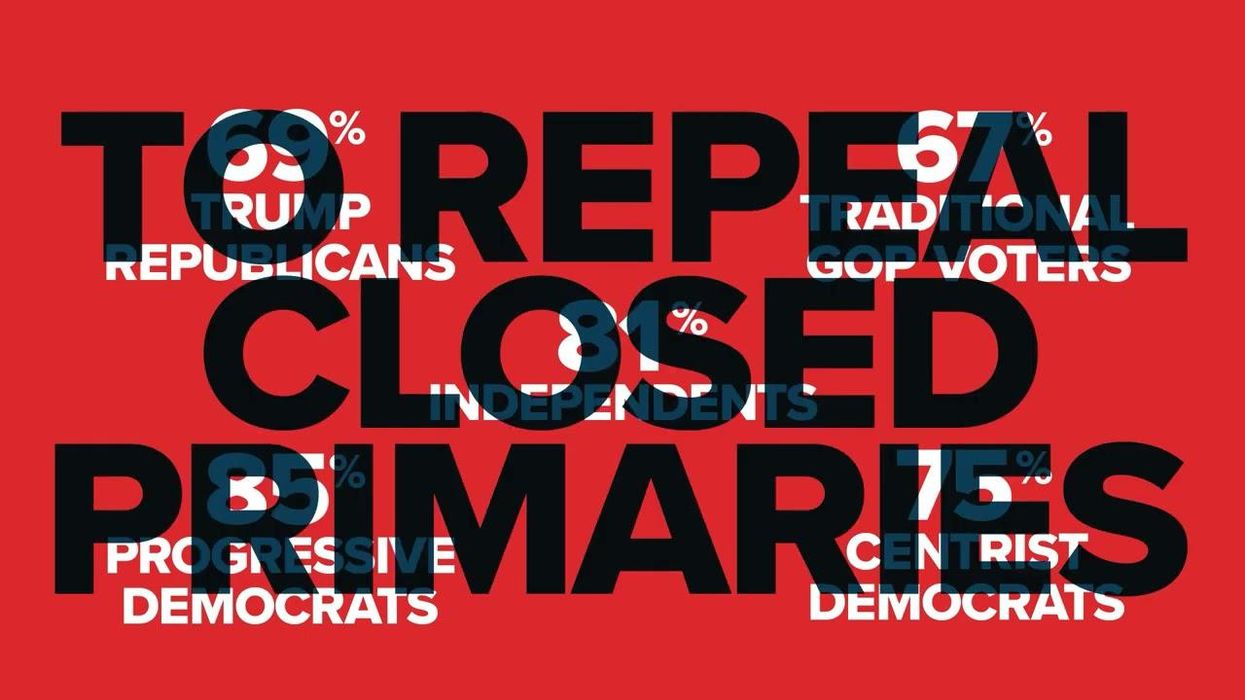Thornburgh is a former CEO of the Committee of Seventy and current chair of that organization’s Ballot PA campaign to repeal closed primaries in Pennsylvania. Opdycke is the president of Open Primaries.
The American electorate is more “anti-party” than at any time since Adams and Jefferson inaugurated America’s first major political feud. According to Gallup, independents now comprise 42 percent of all voters. In states that require party registration, 49 percent of young voters choose “no party affiliation” when they register. One in two veterans identifies as a political independent.
This trend is accelerating in red, blue and purple states. And independents are swinging national outcomes; Barack Obama, Donald Trump and Joe Biden all owe their victories to surges of support from independents. In Pennsylvania, for example, exit polls suggest that the votes of independents swung 15 percent from 2016 to 2020, from Trump +7 to Biden +8. That likely provided the margin of victory in each race.
Yet according to analyst Charlie Cook, fewer than 16 percent of congressional races will be competitive in November 2022, the winner having been decided in a primary. More than 40 percent of state legislators will run unopposed in 2022. In Pennsylvania 80 percent to 90 percent of all legislative races are essentially decided before voters cast a single ballot in November.
More uncertainty, an electorate ready to swing, and yet little general election competition. All the more reason we need to scrap closed partisan primaries and enact open primaries that let all voters participate. If the primaries are where the action is, let all voters vote.
The rise of independent voters is real, and it is challenging the playbooks of both parties.
Democrat Chloe Maxmin discussed this in a recent editorial for The New York Times. Maxim ran and won as a “Green New Deal” Democrat in a rural Maine district that voted overwhelmingly for Trump in 2016 and 2020. She did it by ignoring the advice of national Democratic consultants to double down on her base and instead actually talked to the thousands of independents who live in her district. “Over the past decade, many Democrats seem to have stopped trying to persuade people who disagreed with them, counting instead on demographic shifts they believed would carry them to victory — if only they could turn out their core supporters.”
The Democratic National Committee playbook (the one Maxim and her team threw in the garbage) ignores voters who are not party members. Instead, candidates run tired plays that use analytics and algorithms to find independents who look like Democrats and then market to them as if they are Democrats. They ignore the fact that millions of Americans are exhausted by the grim red team/blue team battles and are asserting “I don’t want to be a part of your party.” Ignoring that fact, most campaigns are still run and won as if it is 1952 and 90 percent of Americans are proud members of one party or the other.
The Republicans play a different version of head-in-the sand politics. They trot out tired tropes about socialism and the culture monster under the bed to whip up their base. New American Voices co-founder Minh-Thu Pham described in The Washington Post what this looks like among first generation citizens, huge numbers of whom are registered as independents. “Armed with efficient ways to spread untruths, antidemocratic forces are taking advantage of immigrants who have limited access to reliable information in their primary languages and are prone to being swayed by narratives that inflame underlying fears based on homeland politics.”
One party takes independents for granted, and the other manipulates fears and misconceptions. Add to that closed primaries, and you have a recipe for a toxic stew of massive voter discontent and disenfranchisement.
At some point, political consultants will reconsider these tired tactics and adopt a more inclusive and creative approach towards independent voters. But to accelerate that move in the short term, it’s past time to repeal closed primaries, which bar independents from casting a ballot in round one, the only round that matters. That's what we're aiming to do in Pennsylvania right now.
Ballot PA is our campaign to repeal closed primaries in Pennsylvania. We’ve built a broad coalition of veterans, business groups, young voters, Democratic and Republican legislative allies, and bill sponsors. Steelers great Rocky Bleier and two former party chairs serve as our statewide spokespeople. Even 74 percent of hard-core partisan voters support the idea, and virtually every media outlet in the state has endorsed the proposal. We’re hoping to follow the lead of states like Maine and Colorado, which share our pragmatic approach to politics and have ended closed primaries in the last few years. We're not the only ones, as leaders in a dozen other states are looking seriously at options for primary reform.
As our two former party chairs point out, when parties give up their extra-constitutional control of voters and open the door to independents, it can actually work to their advantage. Ending closed primaries can help either party win elections and grow their ranks. More independent voters create more party paths to victory in the primary and the general election. Voters wary of being conscripted into a party just to cast a vote that matters will appreciate the “try before you buy” opportunity an open primary affords them.
But it’s only one step. Yes, we need to repeal every law that prevents all voters from voting in every election. But we also need candidates and political leaders who have the vision to see the opportunity independent voters offer them, not only to win but to govern. We need fresh party leaders who are ready, willing and able to break with tired partisan norms and engage with “free agent” voters – independents – who don’t subscribe to either party’s playbook.





















